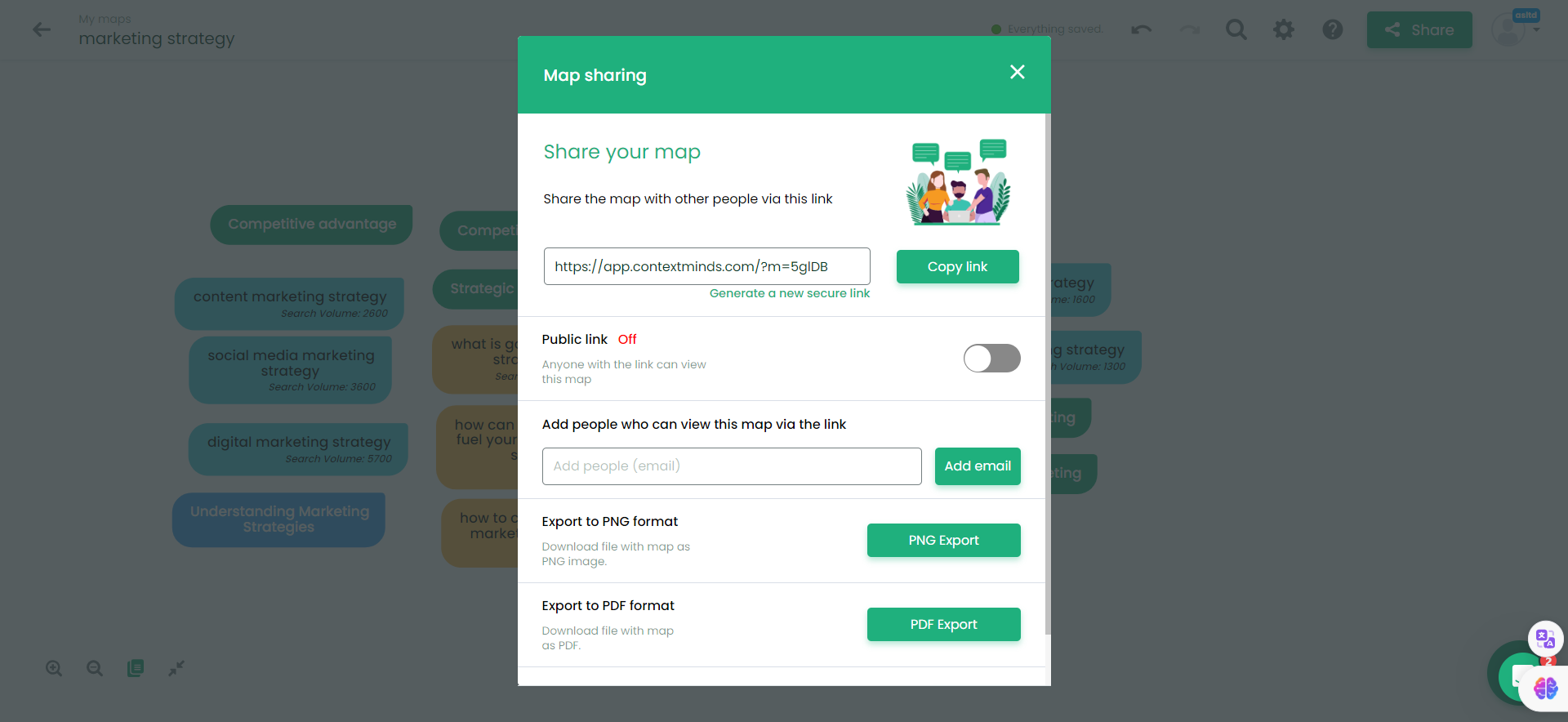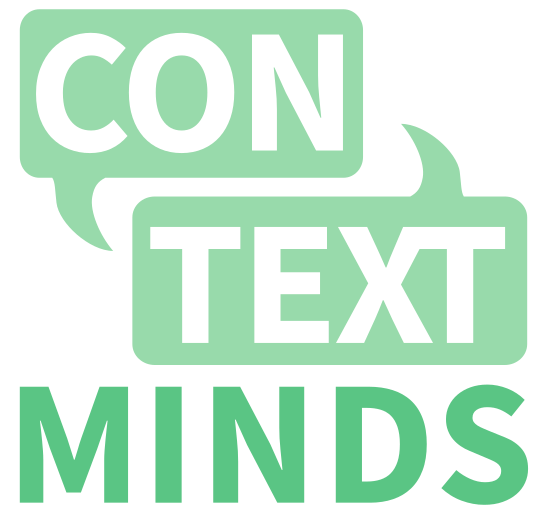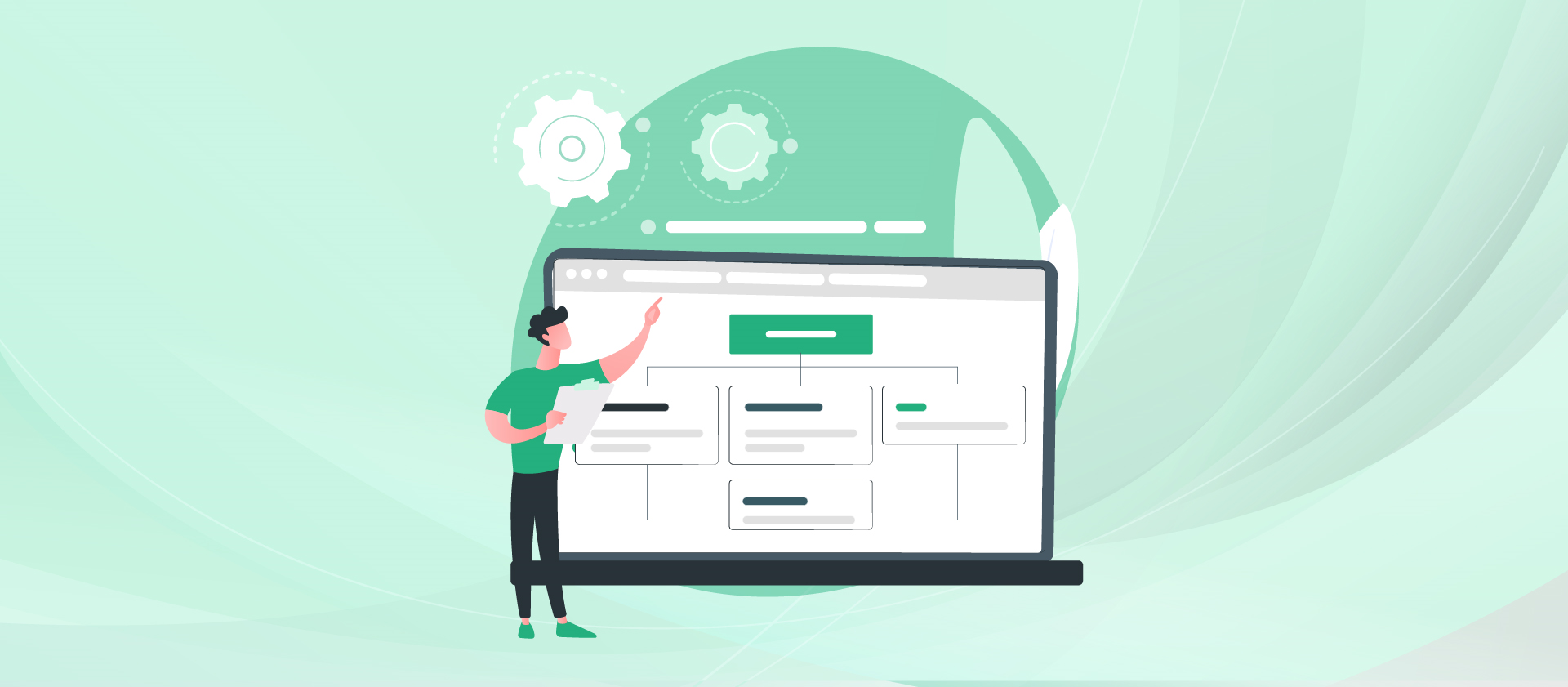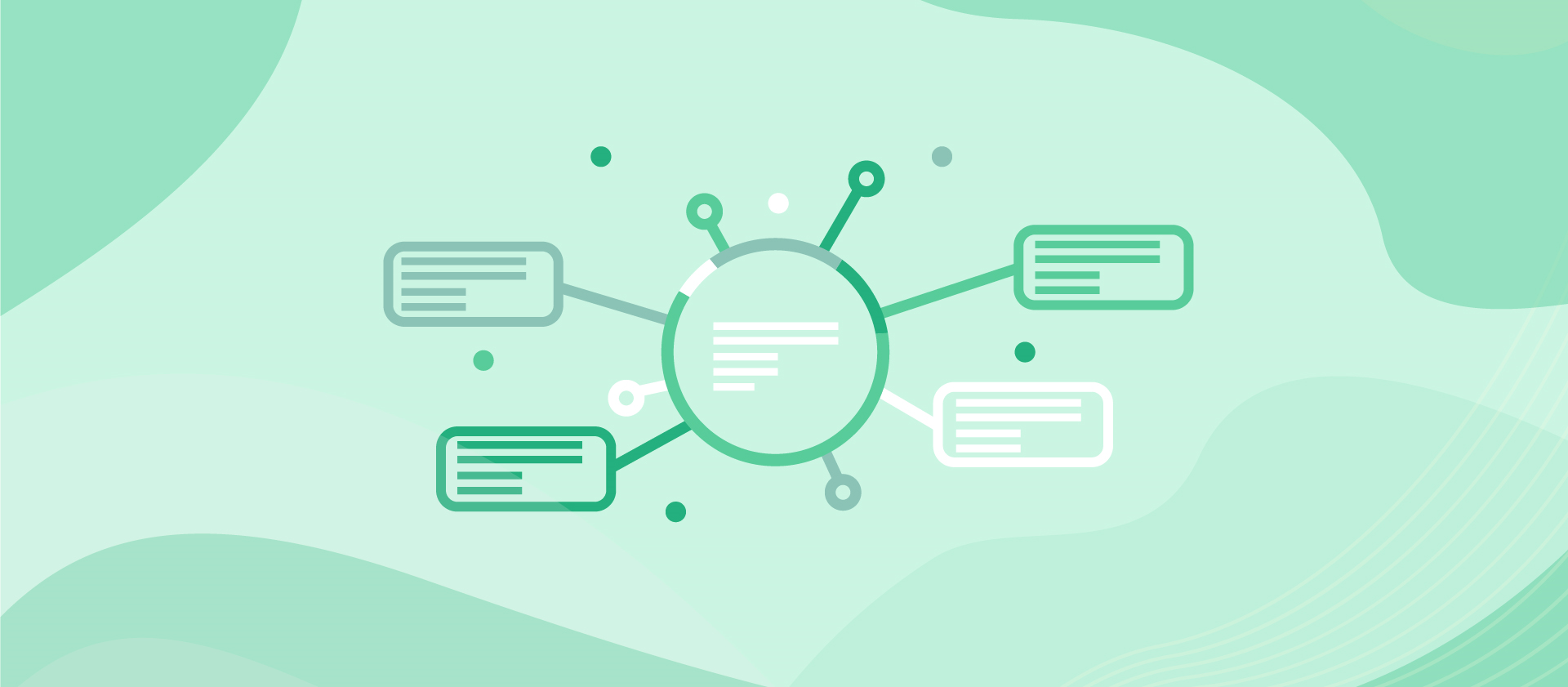Overwhelmed by Data? Discover How Concept Mapping Streamlines Topic Research
Have you ever felt overwhelmed by too much information? A deluge of facts, figures, and opinions that you encounter, especially when diving into research. It's like trying to drink water from a fire hose – too much, too fast!
This is where "concept mapping" comes in. Think of it like drawing a simple map where you can connect points to show how they relate to each other. Concept mapping does the same with information. It helps us see how different pieces of information fit together so that we can focus on what's important without getting lost in all the details.
In this blog, we will explore how concept mapping and tools like ContextMinds can help us handle lots of information quickly and stay on track with our research.
Let's get started!
What is the Rabbit Hole of Research?
Have you ever started looking up something online and suddenly found yourself hours later, far from where you started? This is what we call falling into the 'rabbit hole' of research. It's easy to get sidetracked when there's so much information available at our fingertips.
The Risks of Unstructured Topic Research and Information Overload
When we research without a clear plan, it's like wandering without a map. We might stumble upon interesting facts, but they might not be relevant to what we need. This unstructured approach often leads to information overload, where we collect more data than we can process. It's like gathering puzzle pieces without knowing what picture they should form. The risks here are significant:
- Losing valuable time on irrelevant information.
- Getting lost in a large number of opened browser tabs.
- Feeling overwhelmed by the sheer volume of data.
- Struggling to distinguish important facts from less critical details.
- Missing key information due to lack of organization.
- Decreased productivity and increased frustration.
- Difficulty in drawing meaningful conclusions from the research.
- The potential for inaccurate or incomplete understanding of the topic.
The Importance of Maintaining Focus
Staying focused during research is crucial. It ensures that the time and effort we put into gathering information brings us closer to our goal. When we maintain focus, we not only gather relevant information more efficiently, but we also process and understand it better. This deep, focused understanding is key to creating quality content or making informed decisions.
But maintaining focus isn't always easy, especially with the vast amount of information available at our fingertips. This is where structured approaches like concept mapping come into play. By visually organizing our research, we can keep track of our main ideas and how they connect. This not only makes our research more effective but also more enjoyable. It transforms a potentially overwhelming task into a clear and manageable one.
As we've explored the challenges of falling into research rabbit holes and the importance of maintaining focus, it's now time to equip ourselves with strategies to overcome these challenges. In the next section, we will delve into actionable tips to stay focused and steer clear of information traps.
Effective Methods for Maintaining Focus and Avoiding Information Overload
Staying sharply focused during research is crucial, but it's often easier said than done. Let's delve into some concrete strategies to help you navigate the maze of information without losing sight of your objectives.
Setting Clear Goals
Start by defining what you aim to achieve. Clear goals act as beacons, guiding your research direction. They help you filter out irrelevant information, ensuring that every step taken is a step towards your end goal.
Practicing Selective Attention
Focus only on information that aligns with your goals. By honing in on information that aligns with your objectives, you can significantly reduce the noise of unnecessary data. This disciplined approach helps maintain a clear path through the clutter of information. For example, if you are researching healthy eating, ignore unrelated topics like weight loss supplements.
Prioritizing Tasks
Assess the importance and urgency of each task. By organizing your activities, you can tackle the most crucial aspects of your research first. This approach ensures that your efforts are concentrated where they have the greatest impact.
Using Time Blocks
Allocate specific time periods to different research tasks—for instance, one hour for reading scientific articles and another for exploring stats.
This method helps maintain a structured approach, allowing for focused and undistracted work on each research segment. It's a time management technique that can enhance both efficiency and quality.
Pausing for Reflection
After each research session, take a moment to think about what you've learned. These pauses provide opportunities to assimilate and evaluate the information you've gathered. Reflecting on your findings ensures that you're on the right track and allows you to adjust your approach if necessary.
Setting Realistic Expectations
Accept that you can't read everything. Understanding how much information you can comfortably handle in a given timeframe prevents overload and facilitates better comprehension. Setting realistic expectations helps in maintaining a healthy and sustainable research pace.
Utilizing Technology
Incorporate tools like ContextMinds to streamline your research process. ContextMinds serves as an intelligent assistant, guiding you to relevant information and helping you organize your findings efficiently. It's a valuable asset in maintaining focus and enhancing productivity in your research endeavors.
Harnessing Visual Tools for Effective Note Organization
Organizing your notes effectively can be a game-changer when it comes to research. Visual tools, like concept maps, provide a unique way to structure and understand complex information. Let's delve into how these tools can transform your research process.
The Power of Concept Mapping in Research

Concept mapping is an innovative way to visualize connections between different ideas. Imagine a web of interconnected nodes, each representing a unique piece of information or idea. These nodes are linked by lines, forming a network that helps you see how one concept relates to another. This method is especially useful in research as it allows you to organize thoughts logically and identify relationships between various topics.
Advantages of Visually Organizing Information
When it comes to managing vast amounts of data, visual organization methods like concept mapping can be a real lifesaver. They help transform the often overwhelming flood of information into a clear, understandable format.
Turning Chaos into Order with Visual Structures
Visual tools and concept mapping are like having a personal organizer for your thoughts and research. They arrange scattered pieces of information into a coherent, visually appealing structure. Imagine having a cluttered desk and organizing everything into neatly labeled folders and drawers.
Concept mapping does the same with your research data, acting as a “visual search engine.” This means you're not just organizing information; you're also able to search through your concepts visually, making connections and discoveries that might have been missed in a linear format.
ContextMinds enhances this process by providing features like dragging and dropping search results directly onto your map.
Suppose your software helps with social media content mapping, so you put it at the center. Now, ContextMinds acts as your digital brainstorming partner, organizing your scattered ideas into a coherent visual structure.

As shown in the image, various nodes represent different aspects and tools of SEO and content strategy, such as keyword research, content mapping tools, and identifying long-tail keywords. Links between these nodes indicate relationships and dependencies, showing how each component contributes to a comprehensive content strategy.
For instance, "ContextMinds content topics" is connected to a "brainstorming keywords tool," signifying how the AI suggests related topics and keywords, streamlining the content ideation process. By analyzing and connecting these elements, ContextMinds helps you easily see the bigger picture and navigate the content creation process.
This organized approach can significantly reduce the feeling of being overwhelmed by information and brings a sense of order to what might initially seem like chaos.
Connecting different ideas clearly and effectively
When you're dealing with a lot of information from various sources, it can be challenging to see how everything fits together. Here, visual tools and concept mapping act as connectors, linking disparate ideas in a clear and effective way.
Think of each piece of information as a puzzle piece. On its own, each piece holds a small part of the bigger picture. Visual tools help you put these pieces together. By laying out your ideas, facts, and findings on a concept map, you create a visual representation of how each element relates to the others. This is particularly useful when dealing with complex subjects where connections aren't immediately obvious.
For instance, if you're researching the impact of technology on education, your concept map might include branches for technology in the classroom, e-learning platforms, student engagement, and digital literacy. As you add information to each branch, you'll see how these areas influence one another.
This visual approach not only aids in understanding the interconnections but also sparks new insights.
Enhancing Memory Retention Through Visual Cues
One of the most significant advantages of using visual tools and concept mapping in research and learning is the enhancement of memory retention. The human brain is wired to respond to and recall visual information more effectively than text alone. When you incorporate visual cues into your note-taking and information organization, you align with the brain's natural preference for imagery.
Concept mapping serves as a powerful memory aid in this regard. By translating information into visual formats, like diagrams or maps, you create a mental 'picture' of the information. This is especially beneficial for complex or abstract concepts that can be challenging to remember. Visual cues, such as colors, shapes, or symbols used in these maps, can trigger associations in your mind, making it easier to recall the information later.
Furthermore, the process of creating the map itself reinforces memory. As you decide how to visually represent and connect various pieces of information, you're actively processing and internalizing that information. This active engagement is crucial in enhancing memory retention, making concept mapping an invaluable tool for students, researchers, and professionals.
Streamlining the Brainstorming Process
Brainstorming can sometimes feel like trying to catch rain in a bucket – ideas come from everywhere, but capturing them effectively can be challenging. This is where visual tools and concept mapping, mainly using ContextMinds, come into their own, offering a structured yet flexible way to gather and develop ideas.
Visual tools simplify the brainstorming process by giving you a clear layout. When using concept maps, you start with a central idea and branch out, exploring related concepts and thoughts. This method encourages a free flow of ideas within a structured framework that keeps you focused and organized.
ContextMinds enhances this process by displaying your research and ideas in a visually engaging manner. As you add information to your map, patterns, trends, and gaps become apparent, guiding your thought process. It's like having a conversation with your research – you ask questions, explore answers, and see how different ideas interact and intersect.
For example, as shown in the above video, if you're brainstorming ideas for a marketing strategy, ContextMinds allows you to plot out different aspects like competitive advantage, marketing plans, and potential questions. Seeing these elements laid out in front of you makes it easier to identify how they connect, what's missing, and where the greatest opportunities may lie.
ContextMinds also suggests related topics and questions based on your research, further fueling the brainstorming process. This not only helps in developing a more comprehensive understanding of your main subject but also inspires new lines of inquiry and ideas that you might not have considered otherwise.
By seeing the information laid out in front of you, ContextMinds makes it easier to identify patterns, trends, and even gaps in your knowledge. This can lead to more comprehensive and insightful research outcomes, as you're not just looking at individual pieces of information in isolation but understanding them in the context of a larger network of ideas.
Making Complex Data More Approachable
Dealing with complex data can often feel like navigating through a dense forest – getting lost in the details is easy. Visual tools and concept mapping come to the rescue by simplifying and clarifying complex information, making it more accessible and easier to understand.
Using concept maps, you break down complex data into smaller, more manageable parts. This method involves distilling intricate ideas and large amounts of data into key concepts and visual representations. By doing so, you transform what might initially appear as an overwhelming amount of data into a clear and structured visual format.
For example, consider a complex topic like climate change. It encompasses elements like greenhouse gases, global policies, scientific studies, and impacts on different ecosystems. A concept map helps organize these elements visually, showing how they interconnect and influence one another. Instead of being confronted with a mass of unstructured data, you get a coherent, easy-to-follow diagram that maps out the key aspects of the topic.
Allowing for easy sharing and collaboration
Visual tools and concept mapping are not just tools for individual work; they're also powerful catalysts for collaboration and shared understanding. In a team setting, these tools can significantly enhance communication and collective brainstorming.
The visual nature of concept maps makes them inherently shareable and collaborative. They provide a clear and engaging way to present ideas, making it easier for team members to understand and contribute to a shared vision. It's like having a communal canvas where everyone can add their strokes of insight.
ContextMinds takes this collaborative aspect to the next level. One of its standout features is its facilitation of team-based work on content maps. For example, in a team setting, one person can share their screen with the concept map open in ContextMinds. As the team discusses and brainstorms, this person can add notes, ideas, and connections in real time. This interactive process not only ensures that everyone's ideas are visualized on the map but also encourages active participation from all team members.

As shown above, ContextMinds offers several options to share the mind map with others, such as a secure link, controlling public access, and adding specific people via email, fostering teamwork and collective brainstorming.
Additionally, it provides convenient export options in PNG and PDF formats, making it easy to distribute and present the strategy outside the app.
This approach is particularly effective in streamlining communication. Instead of ideas getting lost in translation through verbal or written exchanges, they are immediately captured and visually represented on the map. This visual and interactive process can lead to a more comprehensive and nuanced understanding of the topic, as different perspectives are visually integrated into a cohesive framework.
Assisting in Identifying Gaps in Information or Research
Visual tools and concept mapping are not just about organizing what you know; they're also invaluable in highlighting what you don't know yet. They assist in identifying gaps in information or research, which is crucial for thorough and accurate work.
Using a concept map, you can visually plot all the information you have gathered. This bird's-eye view allows you to spot areas lacking in detail or completely unexplored. It's akin to having a puzzle with missing pieces - the gaps are apparent and indicate where more research is needed.
ContextMinds enhances this capability by integrating several features that make identifying and filling these gaps easier. As you research and add terms to your ContextMinds map, each term stays on the map, allowing for easy tracking of your research path. This feature helps prevent falling down the rabbit hole, as you can always backtrack and see what led you to a particular point.
Furthermore, ContextMinds has an integrated search engine within the app, streamlining the research process. You don't need to switch between multiple windows or tabs to make notes; everything can be done within the ContextMinds interface. As you search and find relevant information, you can directly drag and drop search results onto your map. This not only organizes your findings but also helps you see where more information is needed.
Additionally, ContextMinds acts like a visual search engine, automatically suggesting related topics and questions. These suggestions can guide you to areas you might not have considered, further assisting in uncovering gaps in your research. By highlighting these areas, ContextMinds ensures that your research is comprehensive and leaves no stone unturned.
Making Decisions Quicker and Easier
When you have a lot of information to consider, making decisions can be slow and challenging. That's where visual tools and concept mapping come into help. They make it easier and faster to decide what to do next.
Think of concept mapping as putting together a puzzle. You can see all the pieces and how they fit together at one glance. This big-picture view helps you make choices quickly. You don't have to go back and read through everything – it's all right in front of you, clear and connected.
For example, if you're planning a big project, a concept map can show you everything you need to consider – your budget, timeline, and resources. With everything laid out visually, you can spot problems faster and find the best solutions without wasting time.
Offering a Flexible Framework for Continuous Updates
Using visual tools and concept mapping is like having a living document that grows and changes with your research. They provide a flexible framework you can easily update as you gather more information or your understanding evolves.
Think of your concept map as a dynamic playground for your ideas. Unlike a static note or a written document, a concept map can be easily adjusted. You can add new information, reorganize existing concepts, or create new connections as your research progresses. This adaptability is especially useful in projects where information is continuously updated or in rapidly evolving fields.
Moreover, this flexibility encourages exploration and creativity. As you add to and adjust your map, you might discover new perspectives or connections you hadn't considered before. It's a process that accommodates change and benefits from it, leading to more comprehensive and insightful outcomes.
Wrapping up
In the vast sea of information that research often involves, concept mapping emerges as a beacon, guiding you to organize your thoughts and insights coherently. It's a tool that brings structure to your research and enhances your ability to see connections and retain important details. Imagine creating a map that lays out all your ideas and how they link together - this is the essence of concept mapping. It simplifies complex topics and makes it easier to digest and recall the information you've gathered.
In all of this, ContextMinds stands out as a helpful tool. It's not just for putting your ideas in order. ContextMinds is like a research buddy that helps you see the bigger picture, find new ideas, and keep everything neat and easy to understand.
The cool part about ContextMinds is how it makes working together easier. You can share your ideas with your team, and everyone can add their thoughts. It's like everyone putting their puzzle pieces together on one table. And because you can keep changing and adding to your maps, your work always stays up-to-date.
So, why not give ContextMinds a try? It can change how you do research, improve your work, and help you deal with lots of information without getting overwhelmed. It's perfect for students, professionals, or anyone who has to deal with a lot of data.

Useful links
Contact info
+420 607 881 942
info@contextminds.com
ContextMinds s.r.o
Blanická 922/25, Prague, Czechia
All Rights Reserved | EMC Engineering, s.r.o.









